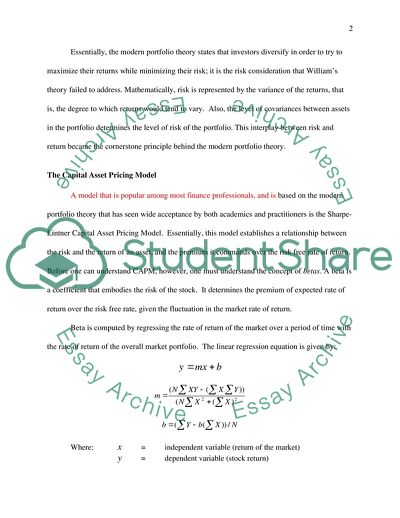Cite this document
(The Relevance of Portfolio Theory and the Capital Asset Pricing Model Coursework - 5, n.d.)
The Relevance of Portfolio Theory and the Capital Asset Pricing Model Coursework - 5. Retrieved from https://studentshare.org/finance-accounting/1732873-critically-analyse-the-relevance-of-portfolio-theory-and-the-capital-asset-pricing-model-capm-to-an-investor-or-fund-manager-in-the-equity-markets
The Relevance of Portfolio Theory and the Capital Asset Pricing Model Coursework - 5. Retrieved from https://studentshare.org/finance-accounting/1732873-critically-analyse-the-relevance-of-portfolio-theory-and-the-capital-asset-pricing-model-capm-to-an-investor-or-fund-manager-in-the-equity-markets
(The Relevance of Portfolio Theory and the Capital Asset Pricing Model Coursework - 5)
The Relevance of Portfolio Theory and the Capital Asset Pricing Model Coursework - 5. https://studentshare.org/finance-accounting/1732873-critically-analyse-the-relevance-of-portfolio-theory-and-the-capital-asset-pricing-model-capm-to-an-investor-or-fund-manager-in-the-equity-markets.
The Relevance of Portfolio Theory and the Capital Asset Pricing Model Coursework - 5. https://studentshare.org/finance-accounting/1732873-critically-analyse-the-relevance-of-portfolio-theory-and-the-capital-asset-pricing-model-capm-to-an-investor-or-fund-manager-in-the-equity-markets.
“The Relevance of Portfolio Theory and the Capital Asset Pricing Model Coursework - 5”. https://studentshare.org/finance-accounting/1732873-critically-analyse-the-relevance-of-portfolio-theory-and-the-capital-asset-pricing-model-capm-to-an-investor-or-fund-manager-in-the-equity-markets.


